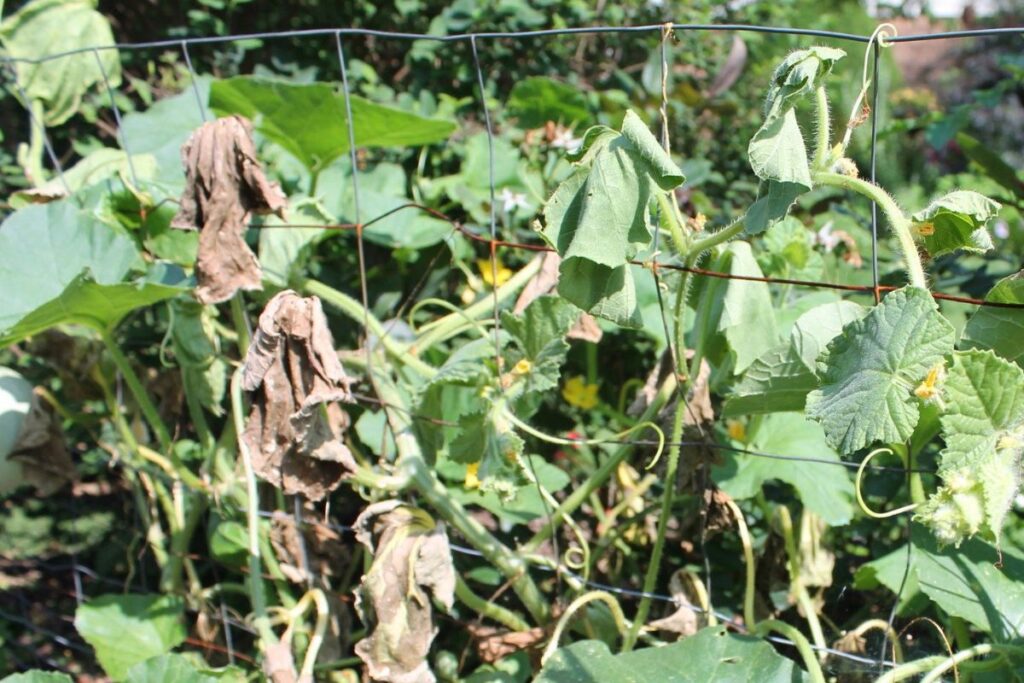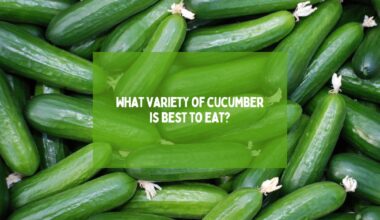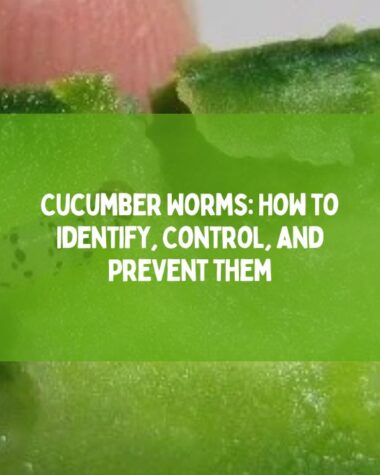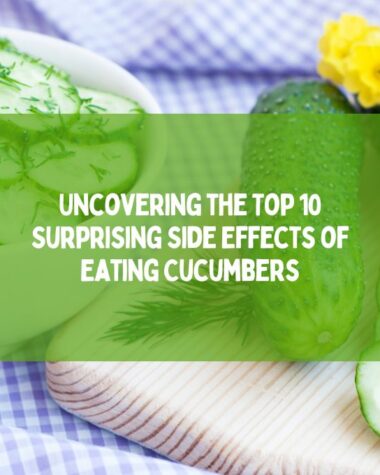Yes, cucumber leaves can be eaten, but they should be consumed in moderation and prepared properly to ensure their safety. The leaves contain vitamins and minerals and can be cooked or eaten raw as a nutritious addition to soups, salads, or other dishes.
Cucumber leaves may seem like an odd ingredient for a dish, but did you know that cucumber leaves are edible? Cucumber leaves are green leaves that grow atop a cucumber plant, and although they are not as widely used as cucumber slices, they can be cooked in a variety of dishes.
In this blog post, we’ll explore the possibilities of using cucumber leaves to create delicious meals and discuss the potential health benefits of eating cucumber leaves.
Can you eat cucumber leaves raw?

Yes, cucumber leaves can be eaten raw. In fact, they are often used in traditional cuisines around the world as a part of various dishes. However, it is important to note that not all cucumber leaves are safe to eat.
Some leaves may be poisonous, especially from plants in the Cucurbitaceae family. Therefore, it is crucial to make sure that you only consume leaves from healthy cucumber plants.
Additionally, gardening practices such as proper pest management and watering techniques can also affect the safety and nutritional value of cucumber leaves.
Nonetheless, cucumber leaves can be a great addition to your plant-based nutrition and sustainable food choices if consumed safely.
Nutritional value of cucumber leaves
Green cucumber leaves are often overlooked, but they are extremely nutritious and can add a delicious flavor to a variety of dishes. Cucumber leaves contain a high level of Vitamin C, which is an essential nutrient that helps protect the body from damage caused by free radicals. Vitamin C also supports the immune system, promotes healthy skin, and aids in wound healing.
Cucumber leaves also contain calcium, which is essential for strong bones and teeth, as well as magnesium, which is important for maintaining a healthy heart. Additionally, they are a good source of sodium, which helps regulate the body’s fluid balance.
Should I cut off cucumber leaves?

If your cucumber plant is healthy and producing well, there’s no need to cut off its leaves. In fact, cucumber leaves are edible and can add a deliciously fresh flavor to your salads or sandwiches.
However, if you notice that some leaves are turning yellow or brown, it’s best to remove them as they may be diseased and can spread to the rest of the plant. It’s also important to note that some cucumber varieties have poisonous leaves, so be sure to check before consuming them.
Overall, as with any leafy greens, it’s important to properly wash and prepare cucumber leaves before consuming.
Related Reading:
- Reasons Your Cucumber Leaves Have White Spots
- How To Identify and Prevent Brown Spots on Cucumber Leaves?
- Bad Cucumbers – Symptoms, Prevention, and Side Effects
- List of Vegetables That Look Like Cucumbers
Can cucumber leaves be poisonous?
No, cucumber leaves are not poisonous to eat. In fact, they are perfectly safe and even nutritious to consume. However, it’s important to note that some cucumber plants may have been treated with pesticides or chemicals that can be harmful if ingested.
To avoid this, it’s best to only consume cucumber leaves from plants that have been grown organically or without the use of harmful chemicals. Additionally, it’s important to properly wash the leaves before eating them to remove any dirt or potential contaminants.
Overall, cucumber leaves are a healthy and safe addition to your diet.
Should you water cucumber leaves?
No, it is best to avoid watering cucumber leaves directly. Moisture on the leaves can lead to fungal diseases such as powdery mildew. It is recommended to water the soil around the cucumber plant instead, which will allow the roots to absorb the necessary moisture.
In addition, it is important to keep an eye out for any signs of illness or disease, as some diseases can cause the leaves to become poisonous. If you do need to water the leaves for some reason, it is best to do it early in the morning, so that the leaves have a chance to dry before the evening, reducing the risk of fungal diseases.
How do you keep cucumber leaves healthy?
Cucumber leaves can be a bit delicate, which means that they require a bit of attention in order to keep them healthy. Fortunately, there are a few simple steps that you can take to keep your cucumber plants thriving:
Keep an eye out for signs of disease or insect infestation.
One of the most common problems with cucumber leaves is powdery mildew, a fungal disease that can cause leaves to turn white or gray and become crinkled or curled. In addition, cucumber beetles and spider mites can damage leaves and cause them to wither or die. If you notice any of these issues, take action to control the problem before it spreads.
Water your plants regularly and deeply
Cucumber plants need plenty of water to grow and produce fruit, and if they don’t get enough, their leaves can become wilted or yellow. Make sure that you water your plants deeply, at least once a week, and keep an eye out for signs of overwatering, such as yellowing leaves or standing water around the base of the plant.
Provide plenty of sunlight
Cucumber plants need at least six hours of sunlight each day in order to grow properly. If your plants are in a shady spot, try moving them to a sunnier location or using a reflective surface, like aluminum foil or a white sheet, to help reflect sunlight onto the leaves.
Use organic fertilizers and pest control methods
Cucumber plants can be sensitive to chemical fertilizers and pesticides, which can damage leaves and even be poisonous to humans. Instead, try using organic fertilizers, like compost or manure, and natural pest control methods, like diatomaceous earth or neem oil.
These options are better for the health of your plants and the environment, and won’t harm you if you accidentally ingest a few cucumber leaves.
By following these simple steps, you can help keep your cucumber leaves healthy and productive, ensuring that you have a bountiful harvest of delicious, fresh cucumbers.
What to do with dead leaves on cucumber plants?

When it comes to dead leaves on your cucumber plants, it’s important to remove them promptly. Dead leaves can attract pests and diseases, which can spread to healthy parts of the plant.
Additionally, leaving dead leaves on the plant can block sunlight from reaching the healthy leaves, hindering growth.
It’s important to note that while cucumber leaves are not poisonous, dead leaves may contain harmful bacteria or fungi. Therefore, it’s best to avoid composting dead cucumber leaves to prevent any potential spread of disease. Instead, dispose of them in the trash or burn them if permitted in your area.
Keep your cucumber plants healthy and thriving by removing dead leaves as soon as possible.
Related Reading:
- What Is the Best Time to Plant Carrots?
- 7 Natural Ways: How to keep bugs off zucchini plants in Your Garden
- All About Black Beauty Eggplant: The Gorgeous Purple-Black Fruit
- How to Harvest Pumpkin Seeds for Planting?
What parts of the cucumber plant are edible?
The most commonly eaten part of a cucumber plant is obviously the cucumber fruit itself.
But did you know that other parts of the plant are edible as well?
The cucumber flowers are actually edible, and some people even pickle them. Additionally, the tender shoots and leaves of a cucumber plant are also edible and can be used in salads or as a garnish.
However, be sure to only consume cucumber leaves that are young and tender, as older leaves can be tough and bitter. It is also important to note that consuming large quantities of cucumber leaves can be harmful as they contain compounds that can be poisonous.







